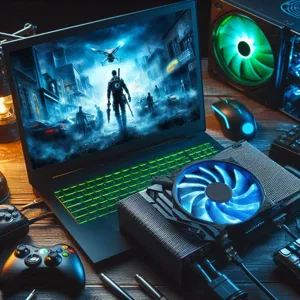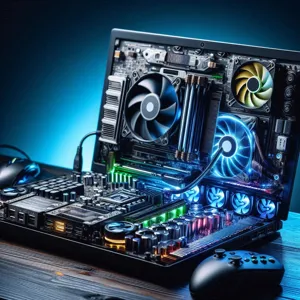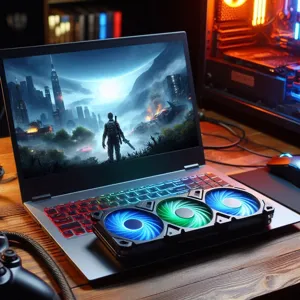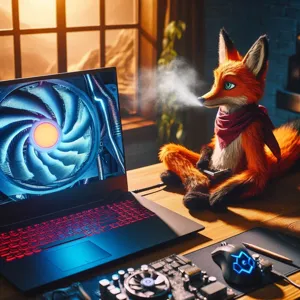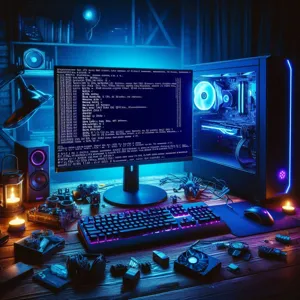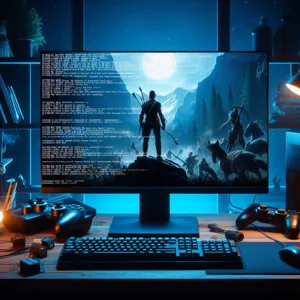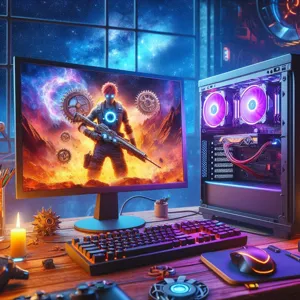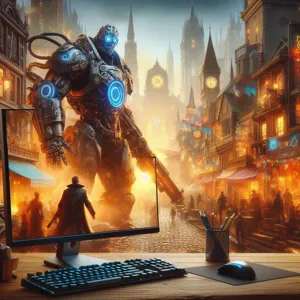In the vibrant world of PC gaming, where every frame counts and every millisecond can make the difference between victory and defeat, ensuring your gaming rig operates at peak performance is more crucial than ever.
Whether you’re navigating vast open worlds, engaging in high-octane multiplayer battles, or immersing yourself in stunning graphics, the last thing you want is for your system to lag or crash. That’s why regular maintenance is key to maximizing your gameplay experience. In this comprehensive guide, we’ll delve into essential tips and techniques to keep your PC in top shape, from optimizing software settings and cleaning out dust to upgrading hardware components. With these strategies, you’ll not only enhance performance but also prolong the life of your gaming setup, allowing you to fully enjoy every epic quest and adrenaline-fueled match. Get ready to unlock the full potential of your gaming experience!
1. Introduction: The Importance of PC Maintenance for Gamers
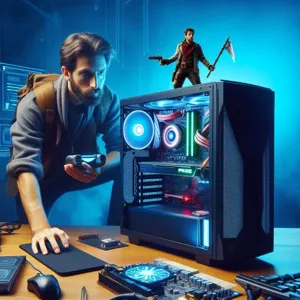
In the fast-paced world of PC gaming, where every millisecond can mean the difference between victory and defeat, maintaining your gaming rig is not just a suggestion, but a necessity. Just as athletes train and refine their skills, gamers must ensure their equipment runs at peak performance to fully enjoy the immersive experiences that modern titles offer.
The importance of PC maintenance extends beyond mere aesthetics; it encompasses everything from hardware health to software optimization. Over time, dust can accumulate inside your PC, obstructing airflow and causing overheating, which can lead to throttling or even hardware failures. Similarly, software clutter—ranging from unused applications to fragmented files—can bog down your system, leading to longer load times, stuttering frames, and frustrating lag during critical moments in gameplay.
Moreover, regular maintenance can enhance your system’s longevity, ensuring that the investment you’ve made in high-performance components continues to yield top-tier experiences for years to come. By taking the time to implement a routine maintenance schedule, you can not only boost your gaming performance but also create a more stable and enjoyable gaming environment. In this guide, we will explore essential maintenance tips that will empower you to maximize your gameplay and keep your PC running smoothly, so you can focus on what truly matters—dominating the competition and conquering new worlds.
2. Regular Software Updates: Keeping Your System Updated
In the fast-paced world of PC gaming, having the latest hardware is only part of the equation for optimal performance. Regular software updates are equally crucial, as they ensure your system operates smoothly and efficiently. Just as game developers release patches and updates to fix bugs and improve gameplay, your operating system and drivers also require periodic updates to maintain compatibility and performance.
Start with your operating system—whether you’re using Windows, macOS, or Linux. Regular updates from Microsoft or Apple not only introduce new features but also enhance security and stability, protecting your gaming rig from potential vulnerabilities. These updates can improve system performance, reducing lag and ensuring seamless gameplay.
Next, turn your attention to your graphics card drivers. NVIDIA and AMD frequently release updates that optimize their drivers for the latest games, providing better graphics performance and resolving issues that may arise with new titles. Failing to update your graphics drivers can result in slower frame rates, visual glitches, and even crashes during gameplay. By keeping these drivers up to date, you can unlock the full potential of your hardware and enjoy visually stunning experiences without interruption.
Additionally, don’t overlook updates for other critical software components such as DirectX, game launchers (like Steam or Epic Games), and even your antivirus software. Each of these elements plays a role in the overall gaming experience. DirectX updates can enhance audio and visual performance, while game launcher updates often include optimizations and new features that can improve your gaming library’s efficiency.
Incorporating regular software updates into your gaming routine may seem like a minor task, but it can dramatically impact your overall gaming experience. Set a reminder to check for updates weekly or enable automatic updates where possible. By doing so, you ensure that your gaming system is always running at its best, allowing you to focus on what really matters—immersing yourself in the exhilarating worlds of your favorite games.
3. Optimizing Graphics Settings: Finding the Right Balance
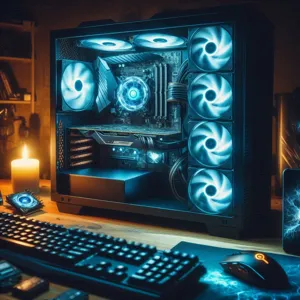
When it comes to PC gaming, striking the perfect balance between stunning visuals and smooth performance is crucial for an immersive experience. Optimizing your graphics settings is a key step in achieving this balance, ensuring that your gameplay is not only visually appealing but also runs seamlessly without lag or stutter.
Start by assessing the capabilities of your hardware. Understanding your graphics card’s limits will help you make informed decisions about which settings to tweak. If you have a high-end GPU, you can afford to crank up the resolution and enable advanced features like ray tracing and ambient occlusion. However, if your system is on the lower end, you might need to dial back on these settings to maintain a fluid frame rate.
Most modern games offer a range of graphics presets, from low to ultra. While these presets are convenient, it’s worth taking the time to customize individual settings for a more tailored experience. Consider lowering shadows and texture quality, which can have a significant impact on performance without drastically affecting visual fidelity. Features like anti-aliasing, which smooths out jagged edges, can be adjusted to find a middle ground between aesthetics and performance.
Another important aspect to consider is your display resolution. Playing at a higher resolution can enhance detail, but it also demands more from your GPU. If you’re experiencing frame rate drops, reducing the resolution or switching to a lower aspect ratio can provide a noticeable boost in performance.
Lastly, remember to keep your drivers up to date. Graphics card manufacturers frequently release updates that optimize performance for the latest games, fix bugs, and improve overall stability. Staying current with these updates can give you the edge you need for a smoother gaming experience.
By carefully adjusting your graphics settings and finding that sweet spot between performance and aesthetics, you can ensure that your gaming sessions are not only visually stunning but also fluid and exhilarating. This optimization not only enhances your gameplay but also prolongs the life of your hardware, allowing you to dive into the virtual worlds you love without compromise.
4. Cleaning Your Hardware: Dusting and Airflow Management
When it comes to maximizing your gaming performance, maintaining a clean and well-ventilated environment for your hardware is crucial. Over time, dust and debris can accumulate inside your PC, obstructing airflow and causing components to overheat, which can lead to sluggish performance or even hardware failure. Regularly cleaning your gaming rig not only enhances its lifespan but also ensures that you’re getting the most out of your powerful setup.
Start by powering down your PC and disconnecting all cables. Using a can of compressed air, carefully blow out dust from fans, heat sinks, and ventilation grilles. Pay special attention to the CPU and GPU, as these components generate the most heat and are often the most affected by dust buildup. Make sure to hold the fans in place while cleaning to prevent them from spinning, which can cause damage.
In addition to dusting, it’s vital to manage airflow effectively. Ensure that your PC case has sufficient ventilation and that there are no obstructions blocking air intakes or exhausts. Consider investing in additional case fans or upgrading to higher-quality ones to enhance airflow. If your setup allows, position your tower in a location where it can breathe freely, rather than crammed into a corner or under a desk.
Finally, don’t overlook cable management. Neatly organized cables not only improve the aesthetics of your setup but also contribute to better airflow. Use zip ties or Velcro straps to group cables together and route them away from fans and other heat-producing components.
By keeping your hardware clean and ensuring optimal airflow, you’ll not only boost performance but also create a more reliable gaming experience. A little effort on maintenance will keep your PC running smoothly and ready for those intense gaming sessions ahead.
5. Managing Storage: Defragmentation and SSD Optimization
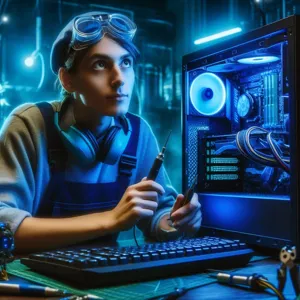
Managing storage is a critical step in ensuring your PC gaming performance remains at its peak. Over time, as you install and uninstall games, download updates, and save countless gaming files, your hard drive can become cluttered and fragmented. This is where defragmentation comes into play, especially for traditional hard disk drives (HDDs). Fragmentation occurs when files are scattered across the disk, leading to longer read times and sluggish performance. By regularly defragmenting your HDD, you can reorganize those files, allowing your system to access them more efficiently and ultimately enhancing your gaming experience.
However, if you’re using a solid-state drive (SSD), the approach is slightly different. SSDs operate on a different principle, and defragmentation can actually be detrimental to their performance and lifespan. Instead, focus on optimizing your SSD by ensuring that the TRIM command is enabled. TRIM helps the SSD manage unused data blocks, which can significantly improve read and write speeds. It’s also advisable to keep a portion of your SSD free—ideally around 10-15%—to maintain optimal performance.
In addition to routine defragmentation and SSD optimization, consider utilizing storage management tools that can identify large files and unnecessary duplicates. This not only frees up valuable space but also allows for quicker access to your games. A well-organized storage system means faster load times, smoother gameplay, and less time waiting to dive into your virtual adventures. Regularly managing your storage will keep your gaming rig running smoothly, ensuring that you stay fully immersed in your gaming experiences without the frustration of lag or long load times.
6. Checking for Malware: Maintaining a Secure System
In the exhilarating world of PC gaming, nothing disrupts your flow quite like a slow or compromised system. One of the most insidious threats to your gaming performance is malware, which can lurk undetected, siphoning off precious system resources and potentially jeopardizing your personal data. To ensure that your gaming rig remains in peak condition, regular checks for malware should be an integral part of your maintenance routine.
Start by investing in reputable antivirus software that is specifically designed to identify and eliminate malicious programs. Schedule routine scans, ideally once a week, to catch any potential threats before they have a chance to affect your gameplay. In addition to traditional antivirus tools, consider employing anti-malware applications that specialize in detecting spyware, adware, and other forms of unwanted software that can compromise your system’s integrity.
Furthermore, keep your operating system and all installed software up to date. Frequent updates often include security patches that address vulnerabilities that malware can exploit. Make it a habit to check for updates regularly, or enable automatic updates to ensure you’re always protected with the latest security enhancements.
Beyond software solutions, be mindful of your browsing habits. Many forms of malware are introduced through suspicious downloads or unsafe websites, so practice caution when clicking on links or downloading files. Familiarize yourself with the signs of phishing attempts and steer clear of untrusted sites.
By prioritizing your system’s security, you’re not only safeguarding your data but also maximizing your gaming performance. A clean, malware-free system runs smoother and more efficiently, allowing you to immerse yourself fully in your gaming adventures without the nagging worry of potential threats lurking in the shadows. Remember, a secure system is the foundation for an optimal gaming experience!
7. Monitoring Temperature: Keeping Your PC Cool
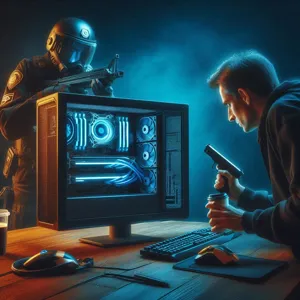
In the thrilling world of PC gaming, performance can make or break your experience, and one of the often-overlooked aspects of maintaining that performance is temperature management. Keeping your PC cool isn’t just about comfort; it’s essential for ensuring that your hardware operates at peak efficiency and longevity. High temperatures can lead to thermal throttling, where your CPU and GPU slow down to prevent overheating, resulting in lag, stuttering, and a less enjoyable gaming experience.
To effectively monitor and manage your PC’s temperature, start by investing in quality software tools that can provide real-time temperature readings for your components. Programs like HWMonitor, MSI Afterburner, or Core Temp can give you insights into how hot your CPU and GPU are running during those intense gaming sessions. Ideally, you want to keep your CPU temperature below 80°C and your GPU below 85°C, although these numbers can vary depending on your specific hardware.
Beyond monitoring, take proactive steps to enhance your cooling system. Ensure that your case has adequate airflow—this means not only having enough fans but also positioning them correctly. A well-ventilated case allows hot air to escape while drawing in cooler air. Dust can be a major enemy as it clogs vents and fans, so make it a habit to clean your gaming rig regularly. A can of compressed air can work wonders in removing dust from heat sinks and fans.
Consider upgrading your cooling solution if you’re serious about maintaining optimal temperatures. Aftermarket CPU coolers, such as liquid cooling systems or high-performance air coolers, can significantly lower your temperatures compared to stock options. Graphics cards often come with their own cooling solutions, but adding case fans or investing in a GPU cooler can provide additional support.
Finally, don’t underestimate the power of thermal paste. If you’re comfortable with a bit of DIY, reapplying thermal paste to your CPU can drastically improve heat transfer away from the chip, especially if it hasn’t been changed since you built your PC.
By keeping a close watch on temperatures and implementing these cooling strategies, you’ll not only maximize your gaming performance but also extend the lifespan of your components. In the high-stakes world of gaming, a cool PC is a happy PC, ready to deliver an immersive and uninterrupted experience.
8. Overclocking: Boosting Performance Safely
Overclocking can be a game-changer for avid PC gamers looking to squeeze every ounce of performance from their hardware. By pushing your CPU and GPU beyond their factory-set limits, you can achieve higher frame rates, quicker load times, and an overall smoother gaming experience. However, this pursuit of power comes with its own set of risks, and it’s essential to approach it with caution to avoid potential damage to your components.
Before diving into the world of overclocking, ensure that you have adequate cooling solutions in place. Overclocking generates additional heat, so investing in high-quality cooling systems—such as aftermarket CPU coolers or liquid cooling setups—is crucial. Monitoring your temperatures is equally important; use software tools like MSI Afterburner or HWMonitor to keep an eye on your system’s thermal performance during gaming sessions.
When you’re ready to start overclocking, take a methodical approach. Begin by incrementally increasing the clock speeds of your CPU or GPU, testing stability with benchmarks after each adjustment. Programs like Cinebench for CPUs or 3DMark for GPUs can help you evaluate performance gains while ensuring system stability. Always keep an eye on your temperatures and be prepared to dial back the settings if things get too hot.
Finally, don’t forget to regularly update your drivers and BIOS. Manufacturers often release updates that can enhance stability and performance, making your overclocking efforts even more rewarding. By carefully managing your overclocking journey and prioritizing safety, you can unlock significant performance boosts that will elevate your gaming experience to new heights. Remember, the key is to find the perfect balance between performance and stability—after all, you want to enjoy your games, not spend time troubleshooting.
9. Updating Drivers: Ensuring Compatibility and Performance
In the fast-paced world of PC gaming, having the latest drivers is akin to having a finely tuned race car: it ensures that your system runs smoothly and efficiently, providing the best possible gaming experience. Updating your drivers is not just a mundane task; it’s a crucial step in maximizing your gameplay. Graphics cards, sound cards, and even your motherboard’s chipset all have drivers that demand regular attention. These drivers are the software that allows your operating system to communicate with your hardware, and outdated drivers can lead to compatibility issues, decreased performance, and even crashes during gameplay.
To ensure your gaming rig performs at its peak, make it a habit to check for driver updates regularly. Most manufacturers, like NVIDIA and AMD for graphics cards, offer easy-to-use software that notifies you when new drivers are available. These updates can optimize your system for the latest games, improve frame rates, and enhance overall graphical fidelity. Moreover, they often fix bugs and issues that can hinder your gaming experience, allowing you to play without the frustrating interruptions of crashes or glitches.
But don’t stop at just the graphics card; remember to update your audio drivers as well, as sound is a pivotal component of immersion in gaming. A good audio driver can improve sound quality and reduce latency, making your gaming experience far more enjoyable. Furthermore, keeping your motherboard’s drivers up to date ensures that all your components communicate effectively, which can enhance performance across the board.
In summary, taking the time to regularly update your drivers is a simple yet powerful way to ensure compatibility and performance. It’s a small investment of time that can lead to significant gains in your gaming experience, keeping your rig ready to tackle even the most demanding titles with ease. So, before you dive into your next gaming session, make sure your drivers are up to date and ready to unleash their full potential!
10. Managing Background Processes: Freeing Up Resources
When it comes to optimizing your PC gaming performance, managing background processes is a crucial yet often overlooked step. Background processes are applications that run behind the scenes, consuming valuable system resources such as CPU, RAM, and bandwidth. These processes can significantly impact your gaming experience, leading to lag, stuttering, and frustrating delays. To free up resources and ensure your games run smoothly, follow these essential tips.
Start by checking your Task manager (Ctrl + Shift + Esc on Windows) to identify which processes are consuming the most resources. You may find that certain applications—like web browsers, cloud storage services, or even system updaters—are running when they don’t need to be. Close any unnecessary programs, especially those that hog memory and processing power.
Next, consider disabling startup programs that launch automatically when you boot up your PC. This can be done in the Task Manager under the “Startup” tab. By preventing these applications from loading at startup, you not only speed up boot time but also free up resources for your gaming session.
For even greater control, you might want to explore the settings of your antivirus software. While it’s essential to keep your system protected, many antivirus programs run background scans and updates that can slow down your gameplay. Adjusting the settings to schedule these activities during off-peak gaming hours can help maintain performance when you need it most.
Additionally, consider using software tools designed to optimize your PC’s performance. Programs like CCleaner can help clear out unnecessary files and manage startup items, while game optimization tools can adjust system settings to prioritize gaming performance.
By effectively managing background processes, you create a more streamlined gaming environment, allowing your hardware to focus its resources where they matter most—on delivering an immersive and enjoyable gaming experience. With these simple adjustments, you’ll be well on your way to maximizing your gameplay and enjoying every moment in the virtual worlds you explore.
11. Using Game Optimization Software: Tools to Enhance Performance
In the fast-paced world of PC gaming, every millisecond counts. To ensure your gameplay is seamless and visually stunning, leveraging game optimization software is essential. These specialized tools are designed to fine-tune your system’s performance, allowing your hardware to work in harmony with the demands of modern games.
One of the primary benefits of game optimization software is its ability to diagnose performance bottlenecks, such as excessive background processes or resource-hungry applications running concurrently. With just a few clicks, you can close unnecessary programs, allocate more RAM to your game, and optimize CPU usage. This not only enhances the frame rate but also reduces lag, ensuring that your gaming experience is as smooth as possible.
Moreover, many game optimization tools come equipped with features that allow you to adjust graphics settings on the fly. If you’re facing a drop in frame rate during high-action sequences, these programs can automatically lower graphics quality or resolution, ensuring that gameplay remains fluid. Some advanced software even offers one-click optimization, where the tool analyzes your system and adjusts settings based on the specific game you’re playing.
In addition to performance enhancements, these tools often include features for hardware monitoring. Keeping an eye on your CPU and GPU temperatures, clock speeds, and system resource usage can help prevent overheating and potential hardware damage during those marathon gaming sessions. Some software suites also provide overclocking capabilities, allowing you to push your hardware to its limits for enhanced performance, provided you’re aware of the risks involved.
Finally, regular updates from these optimization tools ensure that your system stays compatible with the latest games and patches. As developers release updates that can significantly impact performance, having software that adapts to these changes is crucial for maintaining optimal gameplay.
In summary, using game optimization software is a smart move for any serious gamer looking to enhance their gaming experience. By streamlining system performance, adjusting settings intelligently, and monitoring hardware health, you can maximize your gameplay and immerse yourself fully in the captivating worlds that gaming has to offer.
12. Customizing Power Settings: Maximizing Performance vs. Energy Saving
When it comes to gaming on your PC, striking the right balance between performance and energy consumption can significantly enhance your overall experience. Customizing your power settings is a crucial step that often goes overlooked, yet it can have a substantial impact on gameplay smoothness and responsiveness.
Most operating systems come with predefined power plans, typically set to prioritize energy savings over performance. While this is great for conserving energy and extending battery life on laptops, it can lead to throttled performance during intense gaming sessions. To ensure your gaming rig is operating at its full potential, dive into your power settings and consider switching to a high-performance plan. This setting allows your CPU and GPU to run at their maximum clock speeds, reducing latency and increasing frame rates—exactly what you need for a competitive edge.
However, it’s essential to evaluate your gaming habits. If you’re playing high-demand titles that require robust performance, opting for the high-performance plan is beneficial. Conversely, if you’re engaged in more casual gameplay or simply browsing, a balanced or power-saving setting may suffice, ensuring your system remains energy-efficient.
You can also customize advanced power settings by adjusting parameters like the minimum and maximum processor states, which can help you fine-tune how your system responds under different loads. For instance, setting the minimum processor state to 100% in high-performance mode ensures that your CPU is always ready to deliver peak performance when you need it most.
Additionally, consider monitoring your system’s temperatures and performance metrics while gaming. Software tools can help you assess whether your power settings effectively enhance your gameplay or if adjustments are needed. Ultimately, customizing your power settings is not just about selecting a plan—it’s about tailoring your PC’s performance to match your gaming style, ensuring you can maximize your gameplay without compromising on energy efficiency.
13. Regular Backup Practices: Protecting Your Game Data
In the world of PC gaming, few nightmares rival the thought of losing your hard-earned progress due to unexpected crashes, hardware failures, or even cyber threats. This is where regular backup practices come into play, acting as a safety net to protect your game data and ensure you can dive right back into your virtual adventures without missing a beat.
Start by identifying where your game data is stored. Many modern games save your progress in the cloud, but it’s still wise to maintain a local backup for added security. Utilize external hard drives or cloud storage solutions like Google Drive, Dropbox, or OneDrive to routinely back up your game files. Setting a schedule—whether it’s weekly, bi-weekly, or after significant gaming sessions—will help you stay consistent and minimize the risk of loss.
Additionally, consider using backup software that automates the process, allowing you to focus on what you love most: gaming. These programs can be set to run in the background, capturing snapshots of your game data at regular intervals, so you can rest easy knowing your progress is secure.
Don’t forget about your saved configurations and mods! If you’ve invested time customizing your game experience, be sure to back up these files as well. This way, you won’t have to start from scratch if disaster strikes.
Lastly, educate yourself on the best practices for restoring your data. Knowing how to quickly retrieve your backups can save you precious gaming time in the event of a mishap. By implementing regular backup practices, you not only safeguard your game data but also enhance your overall gaming experience, allowing you to maximize your gameplay without the worry of loss.
14. Conclusion: Long-term Maintenance for Sustained Performance
In the world of PC gaming, achieving peak performance is not just a one-time endeavor; it’s a commitment to ongoing care and maintenance. As we’ve explored throughout this blog, the key to maximizing your gameplay experience lies in understanding that your setup requires regular attention and fine-tuning.
To ensure your gaming rig thrives in the long haul, create a maintenance schedule that includes routine checks and updates. This might involve cleaning your hardware, updating drivers, and optimizing your software settings to keep everything running smoothly. Remember that gaming technology evolves rapidly, so staying informed about the latest patches, upgrades, and best practices is essential.
Additionally, consider your environment. A well-ventilated space not only protects your components from overheating but also contributes to your overall comfort during those marathon gaming sessions. Investing in quality peripherals and accessories can also enhance your experience, offering ergonomic benefits that help prevent fatigue and improve performance over time.
Ultimately, by prioritizing long-term maintenance, you’re not just prolonging the lifespan of your hardware; you’re also amplifying your gaming experience. A well-maintained PC can lead to improved frame rates, reduced lag, and a more immersive experience—allowing you to fully engage with the games you love. So take the time to care for your machine, and it will reward you with countless hours of uninterrupted gaming joy. Happy gaming!
15. Additional Resources: Where to Find More Tips and Tools
In the ever-evolving world of PC gaming, having access to reliable resources is crucial for maintaining optimal performance and enhancing your gaming experience. Whether you’re a seasoned gamer or just starting, the right tools and information can make a significant difference in how your system runs.
One of the best places to begin your search for additional tips and tools is online gaming communities. Websites like Reddit’s r/pcgaming and forums on platforms like Tom’s Hardware offer a treasure trove of user-generated content and discussions. Here, you’ll find everything from hardware recommendations to software solutions, often featuring firsthand experiences and advice from fellow gamers.
YouTube is another excellent resource, housing countless channels dedicated to PC building and maintenance. Watching tutorials can provide you with practical, step-by-step guidance on everything from optimizing your graphics settings to cleaning your hardware. Channels like Linus Tech Tips and Gamers Nexus consistently produce high-quality content that can help you troubleshoot issues or enhance your setup.
Don’t overlook the power of dedicated software tools, either. Programs like MSI Afterburner and HWMonitor allow you to monitor your system’s performance, giving you insights into temperature, CPU usage, and overall system health. These tools enable you to make informed decisions about upgrades or adjustments needed to keep your gaming rig running smoothly.
Lastly, consider subscribing to gaming and tech blogs or newsletters. Websites like PC Gamer, IGN, and TechRadar regularly publish articles that cover the latest in gaming technology, performance tips, and hardware reviews. Staying informed about new developments can ensure you’re always one step ahead in optimizing your gameplay.
By leveraging these resources, you’ll be well-equipped to maximize your gameplay and keep your PC in peak condition, ensuring that your gaming sessions are as smooth and enjoyable as possible.
In conclusion, maintaining optimal performance for your PC gaming setup is crucial for an immersive and enjoyable gaming experience. By implementing the essential maintenance tips we’ve outlined in this post, you can ensure that your hardware runs smoothly, your software remains up-to-date, and your system is protected from potential threats. Regularly cleaning your components, optimizing settings, and monitoring performance will not only enhance your gameplay but also prolong the lifespan of your equipment. So, dive into your next gaming session with confidence, knowing that your rig is primed for peak performance. Happy gaming, and may your adventures be filled with excitement and victory!

